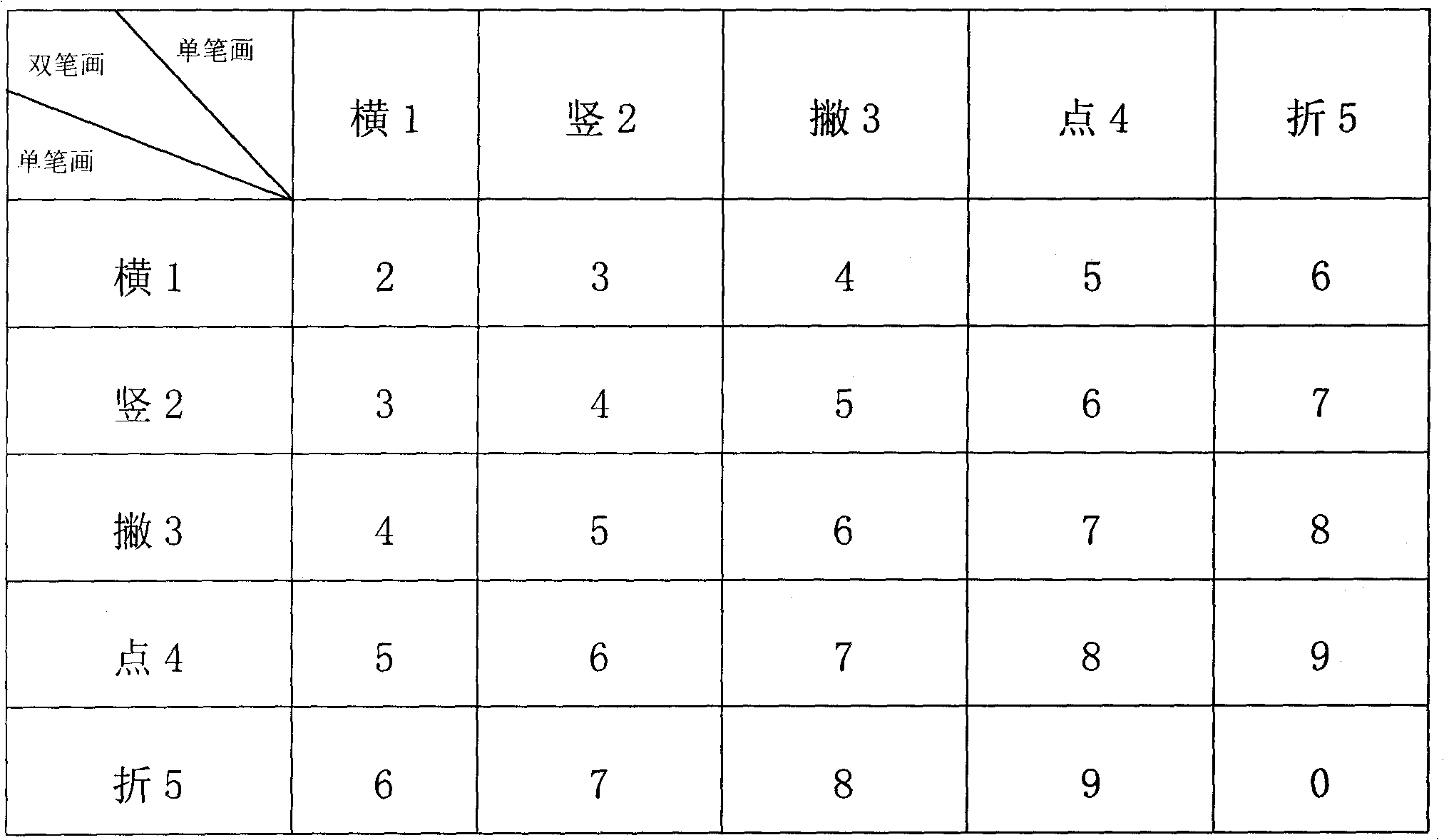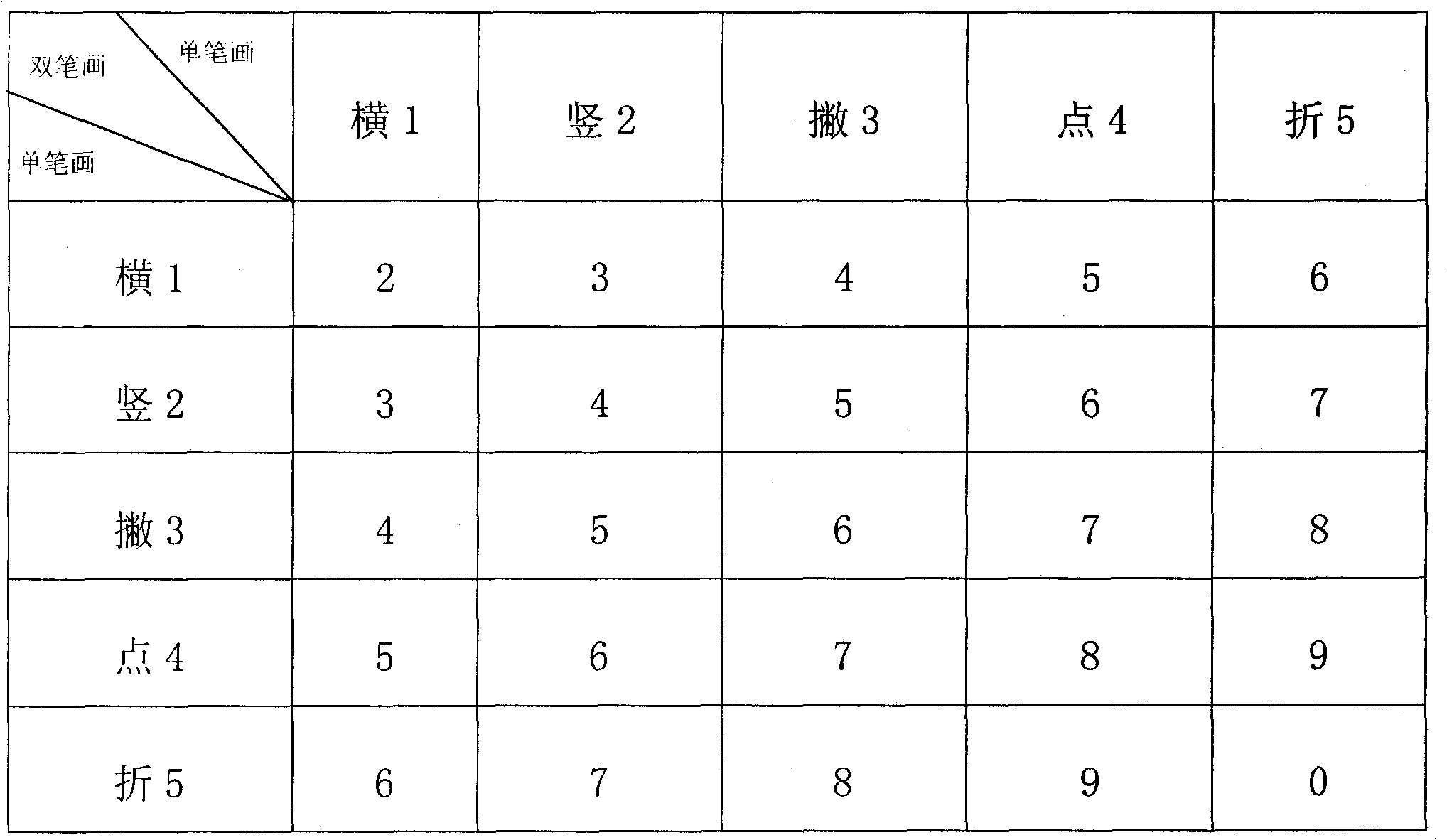Zero-memory double-stroke ten-key Chinese character encoding input method
A Chinese character encoding and Chinese character input technology, which is applied in the input/output process of data processing, electrical digital data processing, instruments, etc., can solve the problems of slow Chinese character input speed, no memory rules, and difficult to remember the root, and achieve simple and fast. The effect of input, small amount of memory, and less heavy code
- Summary
- Abstract
- Description
- Claims
- Application Information
AI Technical Summary
Problems solved by technology
Method used
Image
Examples
Embodiment Construction
[0023] The present invention will be described in further detail below in conjunction with specific embodiments.
[0024] A zero-memory double-stroke ten-key Chinese character coding input method, which uses ten number keys in a general-purpose computer keyboard, and is characterized in that the five general-purpose single-stroke Chinese characters of horizontal, vertical, apostrophe, dot and fold are combined in pairs Form ten kinds of double strokes, according to the writing order, form a four to five Chinese character input codes with the corresponding numbers of the double strokes and the corresponding numbers of the single strokes successively, and the four to five Chinese character input codes correspond to one or several Chinese characters correspondingly, Then select the Chinese character that needs to be input.
[0025] a. When the number of Chinese character strokes is three (including the actual number of strokes and the specified number of strokes), the four-digit ...
PUM
 Login to View More
Login to View More Abstract
Description
Claims
Application Information
 Login to View More
Login to View More - R&D
- Intellectual Property
- Life Sciences
- Materials
- Tech Scout
- Unparalleled Data Quality
- Higher Quality Content
- 60% Fewer Hallucinations
Browse by: Latest US Patents, China's latest patents, Technical Efficacy Thesaurus, Application Domain, Technology Topic, Popular Technical Reports.
© 2025 PatSnap. All rights reserved.Legal|Privacy policy|Modern Slavery Act Transparency Statement|Sitemap|About US| Contact US: help@patsnap.com


